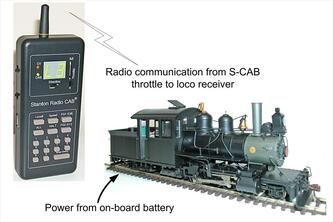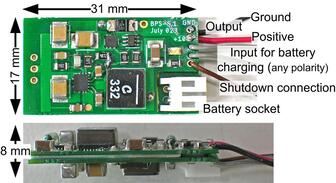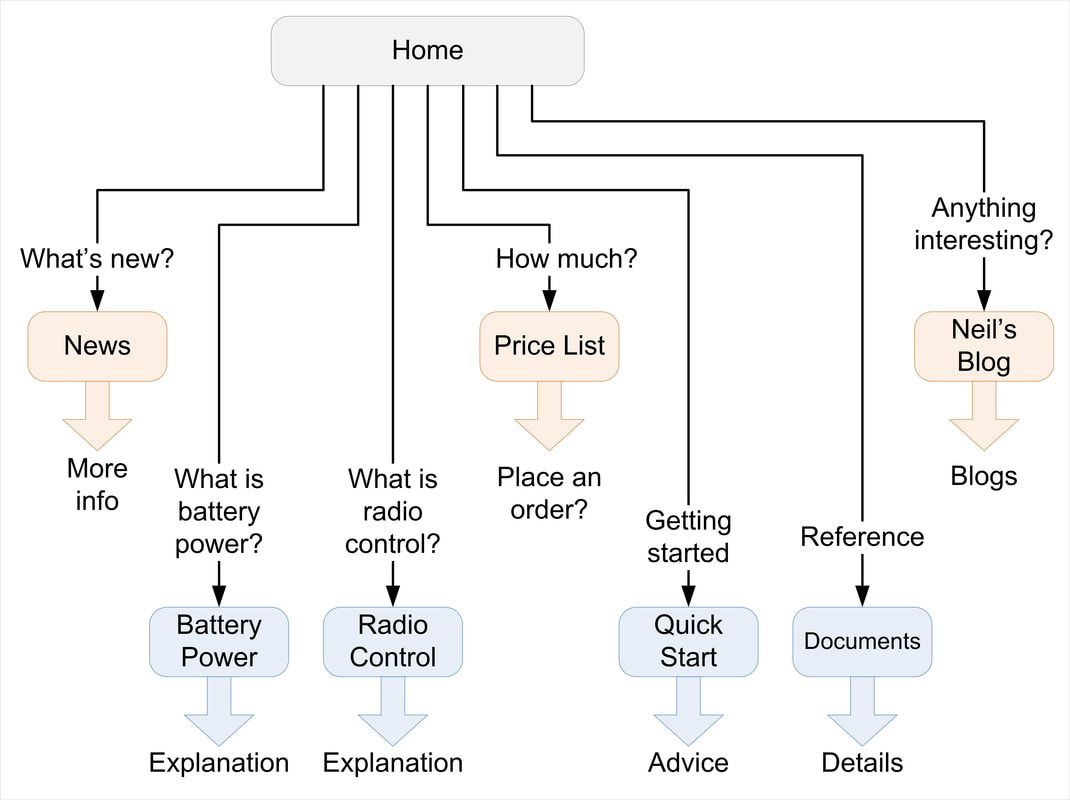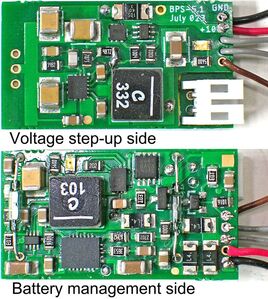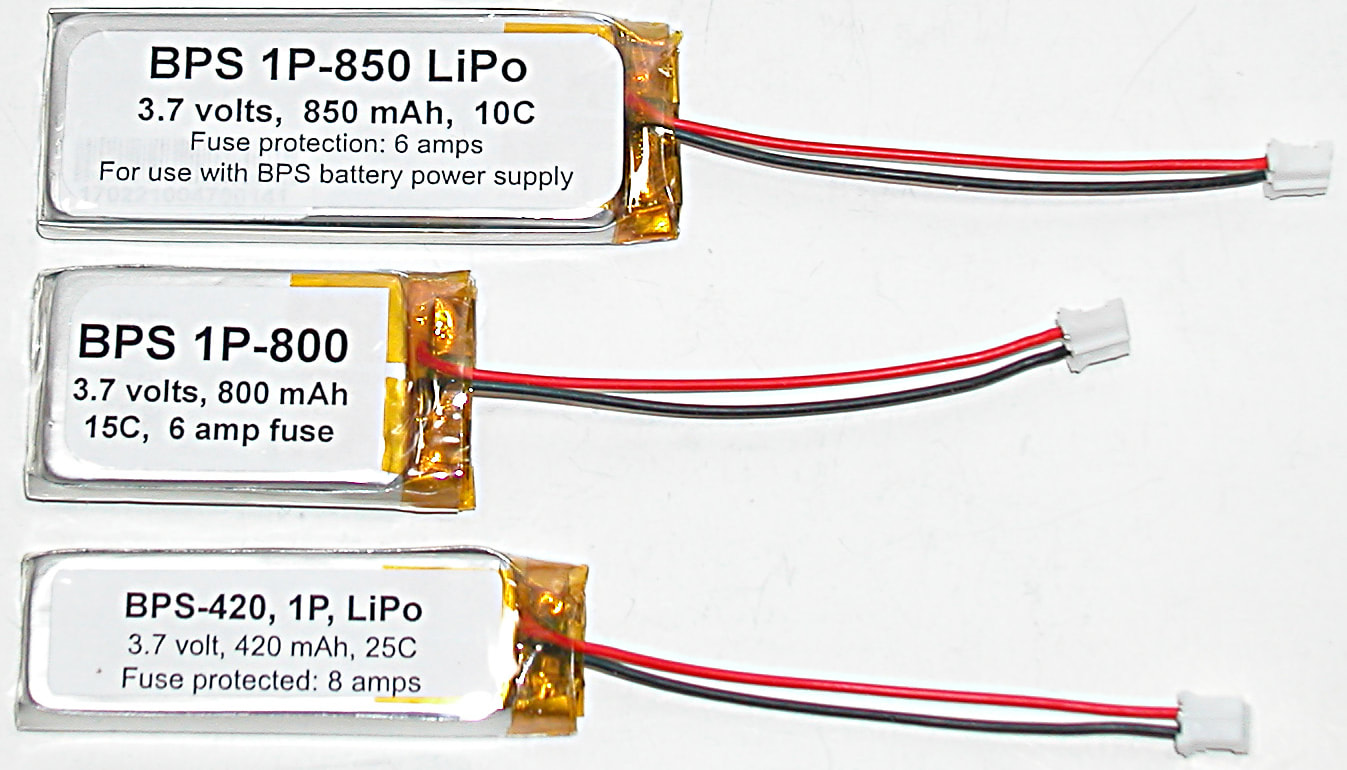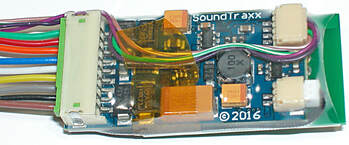About this Website
PurposeThe purpose of this website is to encourage use of on-board battery power and radio control of locomotives (and similar traction equipment) modeled in HO, On3, and On30 scales. Combining on-board battery power and radio control has two major benefits:
What is S-CAB?S-CAB is a set of components to implement battery powered, radio controlled HO-sized model trains. Two technologies are involved:
S-CAB RadioA hand-held wireless controller (the S-CAB throttle) communicates directly with a radio receiver installed in a loco. Commands transmitted by radio control a DCC decoder powered by an S-CAB onboard battery power supply.
S-CAB PowerBPS (latest version is BPS-v5), which is a core component of an S-CAB installation, provides 10 volts and up to 1.2 amps from a 3.7 volt battery. In addition to voltage conversion, BPS-v5 performs battery charging, safe battery management, battery on/off control, and overload protection; all within a small package.
|
Who may be interestedThis website is for model railroad modelers and operators. I'm not an evangelist for new technologies or products. Quite the opposite; I'm an advocate for the simplest, most reliable, proven way to operate a model railroad.
S-CAB does not reinvent model train control. It builds upon, and is compatible with, existing model railroading products and standards, including NMRA standards for Digital Command Control (DCC). However, S-CAB is not DCC and does not require DCC equipment except for decoders, which are used for loco control.
Several obvious questionsWhy use DCC decoders? Because they're mature products with comprehensive model railroading functionality produced in vast quantities by many manufacturers. Development costs have long since been recovered and economies of scale give competitive advantage to established suppliers.
Communication to decoders is by radio?Yes, for NCE and SoundTraxx decoders, the S-CAB receiver delivers DCC commands directly to the decoder's microprocessor. This is called "direct radio connect" (DRC) to distinguish it from the indirect method of using a DCC booster to convert radio data to DCC power.
What about other manufacturers' decoders?Using a DCC booster is not as efficient as the direct radio connect, but works for most decoders.
Is a DCC system required?No, a DCC system is not required. An S-CAB throttle transmits decoder commands directly to locos with S-CAB receivers.
Is S-CAB compatible with DCC?Yes, output from DCC command stations or throttles can be transmitted by S-CAB radio. It can also remain connected to track in order to operate locos without S-CAB radio. Where available, DCC track power can be used by S-CAB BPS for battery charging.
Can S-CAB be used with DC layouts?The answer depends on equipment being used for DC control. If track power is used for BPS battery charging, a well-filtered DC supply between 12 and 13 volts is an ideal power source. Unfortunately, legacy DC voltage controllers often deliver unregulated output with voltage peaks (spikes) that can damage electronic equipment. BPS-v5 can survive voltage peaks up to 30 volts, but it's best to avoid use of old DC loco controllers, especially models with "features" such as "pulse power".
Getting started with S-CABA decision to use battery power is not easy. S-CAB components are available to fellow modelers but determining what will fit and operate successfully in a selected loco requires investigation of space within the model followed by installation and wiring of components.
|
What's happening in 2024?
After difficult years 22 and 23, 2024 has started with great interest in S-CAB, particularly BPS-v5.
The good news:
The good news:
- There is high demand for BPS-v5 and its performance is proving to be excellent.
- A new version of S-CAB throttle is now available. No change of functionality, but keypad uses tactile switches.
- Inventory of S-CAB components is good. It takes additional effort, but each delivery is assembled and tested before shipping.
- Price of latest deliveries of LiPo cells from China (the only affordable source for hobby use) has doubled.
- Rigorous enforcement of regulations for transport of batteries seriously complicates shipment of goods that use LiPo batteries.
Effective immediately, S-CAB international sales are no longer available, Canada is the only exception.
US and Canadian shipment will use Fedex Ground. Minimum shipping cost for US is $18, for Canada it's $35.
BPS-Lite original version is discontinued and will be replaced by BPS-Lite-v5 using same components as BPS-v5.
- It will use battery management half of the BPS-v5, and replace its voltage step-up half with a board for 3.7 volt power distribution.
- How quickly this happens will demand on user interest.
Two versions of diesel loco motherboard are planned for BPS-v5.
- A version for decoders with JST 9-pin connector is available.
- A version for decoders using an NEM 21-pin connector is expected later this year.
420 mAh batteries are replaced by 1P-480 and 2P-480 batteries using a new supply of 480 mAh cells.
- Dimensions are unchanged except cell thickness is 6.8 mm.
The S-CAB Order Form has been updated for 2024.
- All quotes after January 21 will use the the new form.
What happened in 2023?
|
The big news: BPS battery power supply is now in stock.
Even better, it's a new version, taking advantage of newer components and improving a little on version 4 which it replaces. Nothing changes with respect to installation except its short enough (31 mm) to fit crosswise in most HO scale steam tenders. BPS-Lite will be replaced by using battery management half of BPS-v5.
This is a benefit of BPS-v5 modular design which simplifies manufacturing. All is well with S-CAB radio receivers.
They are integrated with NCE and SoundTraxx decoders using direct radio connect. A DCC version combines receiver with a DCC booster for use with factory-installed decoders, and the latest innovation adds dual control to Blunami decoders. S-CAB receivers can also be supplied with frequency that is compatible with CVP T-5000 and T-6000 throttles. |
2021 Update
|
As I commented in a 2020 update, S-CAB components have iterated through several development cycles, reached a stable level of maturity and accumulated a solid base of user experience. They are a proven set of components for on-board battery power and radio control of HO On30, On3, and some S-scale models. 2020 was a busy year for development, which is now summarized under "News"
August 2021: This is a major website update. In addition to revising this "Home" page, a "News" tab has been added for quick access by visitors who are familiar with S-CAB. "Battery Power" and "Radio Control" tabs link to basic information for education/reference. "Price List" is most frequently visited S-CAB page. Some time will be required to implement changes, but the plan is to make "Price List" the go-to tab for S-CAB inquiries. Both Contact and Order Forms are moved under "Price List" tab. Future website maintenance will concentrate on "Home", "News" and "Price List" pages plus occasional additions to "Neil's Blog". Blue tabs on the navigation diagram link to relatively stable information that does not require frequent updates.
|
S-CAB Components
Motherboards
What is a Motherboard?
A motherboard (MB) is a circuit board onto which various components are mounted. Connectors and circuit traces on motherboard eliminate wiring between components. Terminals are provided for connections to loco motor, lights, speaker and battery charging input. In some cases lights and speaker can be mounted on the MB.
Example: Motherboard installation in a HO-scale Atlas-Kato GP-7
The entire assembly, including lights and speaker, is mounted on motherboard. No wiring bird-nest, no wired connections to the loco body and six connections to the chassis; two for motor and two from each truck for power pickup.
Acknowledgements
References to various manufacturers and their products are scattered throughout this website. Their proprietary rights, trade marks, copyrights, etc. are acknowledged.
